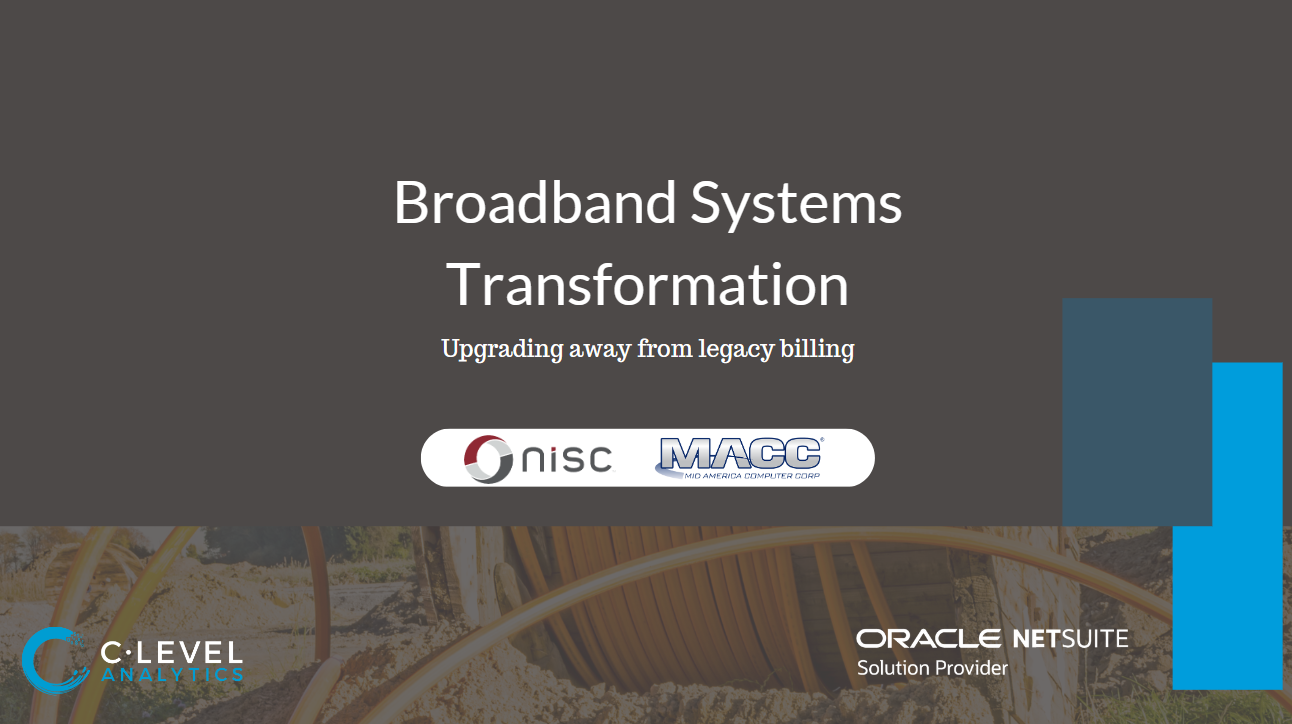Broadband Systems Transformation: Upgrading from Legacy BSS/OSS
The old world of monolithic BSS/OSS billing systems attempting to "do it all" are over. Modern BSS/OSS players are starting to emerge as the future....
2 min read
 C Level
:
June 14, 2023
C Level
:
June 14, 2023

Established broadband organizations have more complex considerations for systems and business processes because they sell a more varied and wide range of products and services over larger, although more consolidated, geographies. These organizations sometimes mix wireless and wired technologies, creating more challenging decisions than greenfield organizations. Multiple historical acquisitions only compound the issues when transforming these businesses. Add new hires and executives, potentially from outside industries, and you have a situation ripe for struggle. But these established players are just as hungry for growth and expansion as their greenfield counterparts. It isn't all bad. These organizations have some things going for them that others do not!
While a few of the modern BSS/OSS systems still accommodate legacy services like voice, video, and long distance, the focus and innovation of software are centered around fiber deployment and operations. This puts greenfield organizations at an advantage when they have to decide on what application systems to purchase. Many established players are at least thinking about the future of legacy services, with some choosing to narrow their focus or outsource them.
BSS/OSS systems developed recently have a vast business and technical advantage over older competitors. The technology underneath these newer vendors is vastly superior, which allows much more flexibility and a much faster rate of innovation. Because of a more intense industry focus on internet service and the superior technology of newer software vendors, these new vendors will win the day unless the legacy BSS/OSS players pivot drastically and quickly. We believe the odds favor the latest software vendors and solutions.
Regarding accounting and ERP systems, broadband providers also want to upgrade functionality. Many established players have a complex legal entity structure and particular transaction requirements to track interactions between entities accurately. These requirements also vary based on how independently and geographically diverse service areas are. Built-in accounting functionality in the legacy BSS/OSS systems will not scale like a purpose-built accounting system, not to mention the gaping holes of functionality that already exist and will get worse going forward. If the organization is already on an independent but low-level accounting system (think QuickBooks, Sage, etc.), these are also leaving too much to be desired. This leads broadband decision-makers to shop around with mid-market ERP vendors. Still, the unfortunate news for the established and more complex organizations is that even the mid-market systems are missing some critical features they seek. Most of the time, these gaps are rarely discovered in the sales process! Do your homework or find someone that can help. Even so, finding these shortcomings would lead them to look at the large ERP systems with many of the features they are looking for. For most, these large ERPs will be out of reach from a pricing standpoint, but perhaps the worst part of this story is that two more problems exist at the highest levels of ERP. First, the technology of these large ERP systems might be "cloud-based" in name only. Many are retro-fits, are still based on old technology, and will still have the same problems with slow or little innovation. Second, consulting resources that support large ERP systems fetch much higher rates because they also work for some of the largest companies in the world. The ERP decision is not an easy answer for an established broadband organization. Like most well-thought-out choices, the answer is "it depends" and involves considering business objectives, not just technical ones.
If business transformation were easy, all would be successful at it. While the size and complexity of these larger broadband organizations have unique challenges, they also have advantages. Typically the staff at these organizations knows their job, and the administration and executive team are more experienced. But arranging the success of such a transformation for these organizations is more of an art form than a technical exercise. Your technical decisions during these efforts have real short-term, medium-term, and long-term business impacts. It takes a composer of sorts to make these complex efforts a success. They are challenging but not impossible. Get the right people to help you make the necessary decision and go for it because the competition isn't waiting around!
If you missed the previous blogs, you can check out part 1 (overview) and part 2 (greenfield).

The old world of monolithic BSS/OSS billing systems attempting to "do it all" are over. Modern BSS/OSS players are starting to emerge as the future....

"Much has changed for telecom service organizations in recent times. With the focus more narrowly defined on providing faster and more reliable...

Hakuna matata The phrase "Hakuna Matata" means "no worries," and you might recognize it from Disney's "The Lion King" from a couple of decades ago....